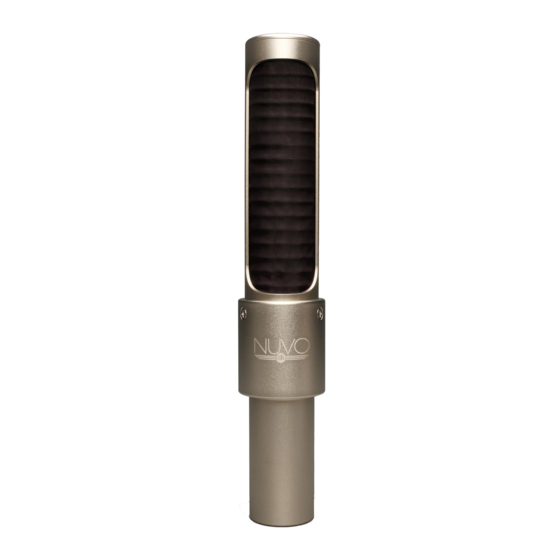
AEA N22 Owner's Manual
Active near-field ribbon mic
Hide thumbs
Also See for N22:
- Owner's manual (14 pages) ,
- Specifications (2 pages) ,
- Owner's manual (12 pages)
Advertisement
Quick Links
Advertisement

Summary of Contents for AEA N22
- Page 1 AEA N22 OWNER’S MANUAL ACTIVE NEAR-FIELD RIBBON MIC...
-
Page 2: Welcome
Whether you are a musician, home studio owner, or experienced producer/engineer, you will find that the N22 provides a great ribbon tone without the need for EQ in most applications. Most importantly, the N22 was designed by listening first, and measuring only after experienced musicians told us the microphone sounded great. -
Page 3: Table Of Contents
CONTENTS WELCOME INTRODUCTION SUPPORT GENERAL GUIDELINES APPLICATION ADVICE SPECIFICATIONS... -
Page 4: Introduction
(or figure-of-8) pickup pattern. Optimally designed for close-up miking applications like acoustic and electric guitars, vocals, drums, or piano, the N22 can also be used a few feet away from the source thanks to its healthy output level. -
Page 5: General Guidelines
The phantom current draw for active AEA ribbon mics is 7 milliamps. IEC specifies P48 power should be able to deliver 10 milliamps per input. Some USB and battery-powered audio interfaces won’t deliver this. - Page 6 If you plan to use your N22 in an outdoor or high-wind environment, we recommend using the AEA NUVO windscreen. Designed specifically to the contours of both the N22 and the N8,...
-
Page 7: Application Advice
The N22 works well with all standard microphone stands, a high-quality boom stand will still make your life a little bit easier. - Page 8 Since the N22 is bidirectional, it exhibits nulls at right angles to the principal axis. These nulls produce a “plane of rejection” around the sides, top and bottom of the mic that can be used effectively to reduce leakage.
- Page 9 A NEAR-FIELD RIBBON The N22 is a near-field ribbon mic and is best used up-close to the source. Its optimal distance for miking is between one and 18 inches (2 cm –...
-
Page 10: Specifications
SPECIFICATIONS Operating Principle: Pressure gradient transducer Directional Pattern: Bidirectional Frequency Range: <20 Hz to >20 kHz Maximum SPL: 141 dB SPL (1% third harmonic > 1 kHz) Sensitivity: 6.2mV/Pa (-44.1dBV) into unloaded circuit Output Impedance: 92 Ω broadband Rec Load Impedance: Phantom 1.0 kΩ... - Page 11 DIMENSIONS & POLAR PATTERN 1.38” 1.62” Directivity -30° 30° -60° 60° -90° 90° -120° 120° 10000Hz 4000Hz 2000Hz -150° 150° 1000Hz 500Hz 180° 200Hz FREQUENCY RESPONSE • Data below 200 Hz omitted due to measuring room restrictions • 0 dBr is equivalent to 6.2mV/Pa (-44.1dBV) •...
- Page 12 AEARIBBONMICS.COM | @RIBBONMICS | INFO@RIBBONMICS.COM | (626) 798-9128...













Need help?
Do you have a question about the N22 and is the answer not in the manual?
Questions and answers